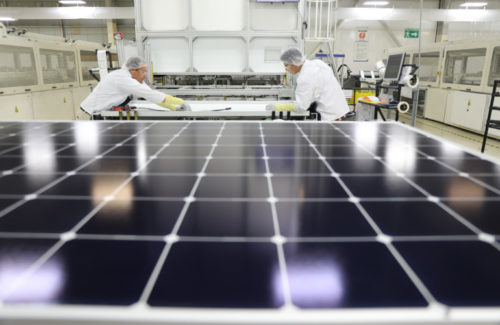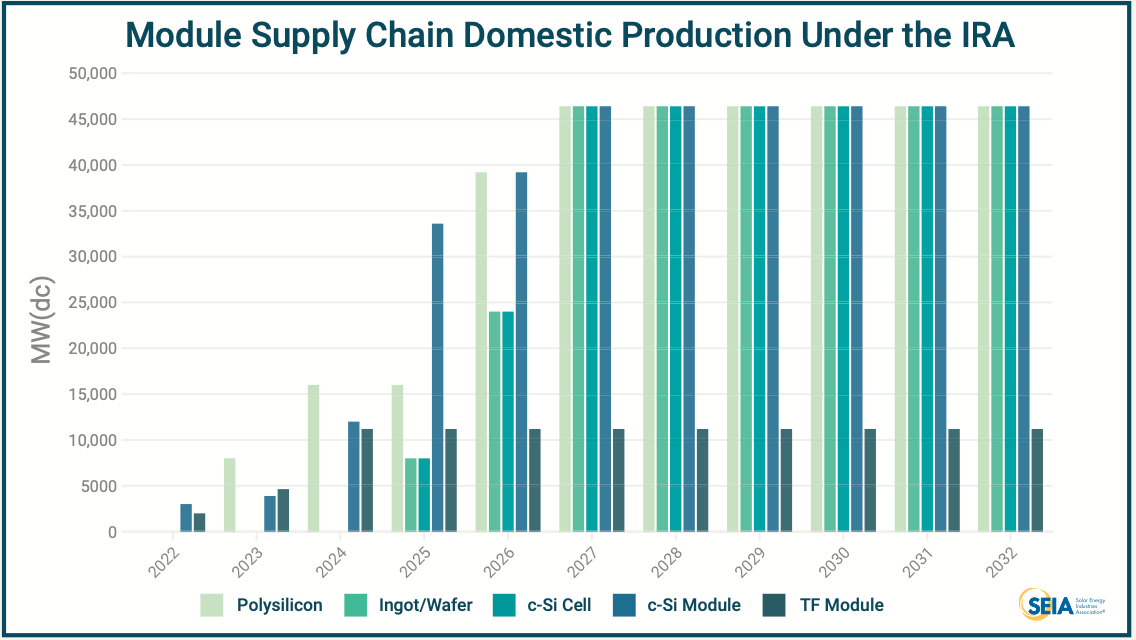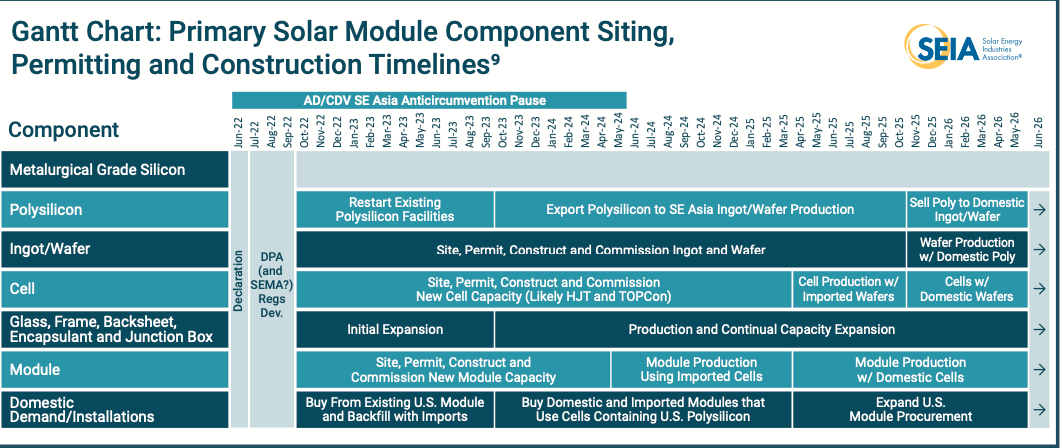SEIA roadmap charts path to 50 GW of domestic solar manufacturing by 2030

Solar panel assembly at Maxeon’s facility in Mexico.
Today, the Solar Energy Industries Association (SEIA) released a roadmap with near- and long-term steps to dramatically scale America’s solar manufacturing sector now that the Solar Energy Manufacturing for America Act (SEMA) has passed as part of the Inflation Reduction Act (IRA).
The new whitepaper, Catalyzing American Solar Manufacturing, outlines how the solar and storage industry can capitalize on this policy support and build a manufacturing base that is cost-competitive, ensures sufficient demand and supports a strong, diverse workforce. It also provides a snapshot of the current market landscape as well as analysis of how SEMA and other provisions in the IRA can help scale domestic production.

SEIA’s projection of the feasible timeline and ramp-up of all elements of panel production under the IRA.
“For the first time, the United States has industrial policy in place that will usher in a new era of clean energy manufacturing,” said SEIA president and CEO Abigail Ross Hopper. “This roadmap is a blueprint for strategically growing America’s clean energy supply chain and supporting the companies that have committed to U.S. production once the reconciliation package becomes law. If we follow the recommendations in the paper, we can grow the U.S. solar manufacturing workforce and put the solar and storage industry on a path to secure, sustainable and equitable growth for decades to come.”
Global instability and supply chain challenges over the last few years underscore the importance of domestic production and the need to reach SEIA’s goal of 50 GW of U.S. solar manufacturing capacity by 2030. New production capacity can dramatically reduce shipping and import costs, which will insulate the U.S. solar and storage industry from global supply disruption and help secure the safety and reliability of the electric grid.
Once SEMA is in place, the roadmap recommends that manufacturers consider demand and timing for their products and focus their attention on downstream production first. This includes expanding domestic module manufacturing first so there is existing demand for domestic cells, ingots and wafers once these products become available. The paper emphasizes that domestic manufacturing can grow in the near-term as the IRA dramatically scales up demand for solar and storage products, but that capacity must be scaled up over a period of several years.

Thoughtful industrial policies and a long-term strategy for domestic manufacturing are key to strengthening America’s energy security and creating hundreds of thousands of high-quality manufacturing jobs. Read the roadmap and learn more about SEIA’s vision for the Solar+ Decade.
View Solar Power World’s current list of domestic solar panel manufacturers here.
News item from SEIA
This roadmap is the first report in a series of papers that will focus on emerging opportunities and challenges for the solar and storage industry. The next report will focus on building a robust U.S. manufacturing base for energy storage equipment.
You may also like:
<!–
–>
Original Source: https://www.solarpowerworldonline.com/2022/08/seia-roadmap-50-gw-domestic-solar-manufacturing-by-2030/












